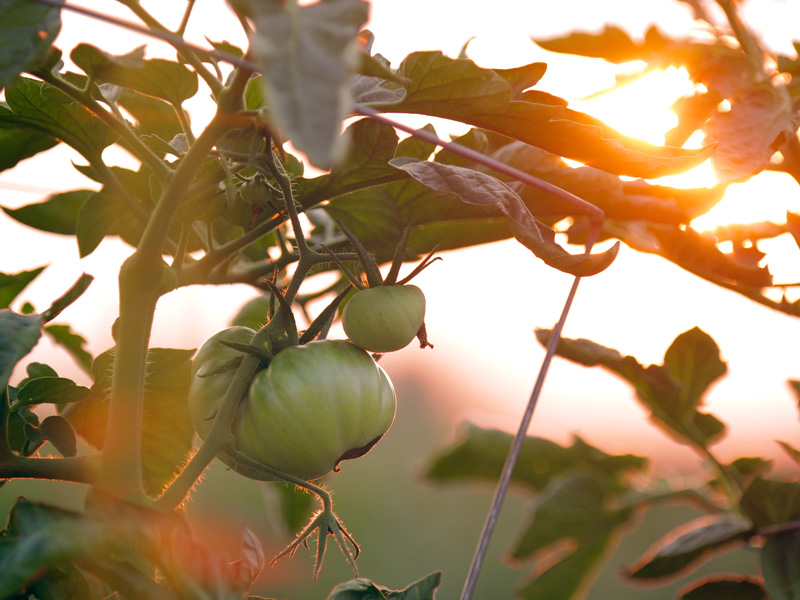Monsoon Vegetable Gardening
When a gardener spends every day staring at the same plants, little changes can mean big things. At the Garden, the plants can give us subtle signals that monsoons are on their way long before thunderheads begin to crowd the sky. Right now, barometer bushes (Leucophyllum sp.), guayacans (Guaiacum colteri) and rain lilies (Zephyranthes sp.) are flashing surprise bursts of blossom. Even the Chinese wisteria (Wisteria sinensis) have unfurled a few unseasonal showers of pale purple blooms. Rain is coming; just you wait.
Weather Conditions to Watch
For edible growers, the gift of humid air, slightly cooler evenings and rain offers a precious window to plant another round of warm-season crops. Right now is a perfect time to plant a vegetable garden that bridges the gap between spring harvests and fall planting.
When preparing to plant, watch the weather and track your garden’s sun exposures. Look for slight temperature dips, increased humidity and storm predictions. Warm-season crops typically want at least six hours of direct sunlight, preferably early in the day with late afternoon shade. Using 30-50% shade cloth over areas receiving direct afternoon sun will protect plants from sunburn stress.
Types of Crops
Now is a great time for transplanting crops in the Solanum family. Tomatoes, peppers and tomatillos will all grow well through late summer for fall harvests. Consider choosing small-fruiting tomato varieties like cherry or pear that will mature in 70 days or less.
The seeds of many warm-season crops such as squash, beans and corn grow best when planted directly into their growing beds rather than transplanted. Experiment with planting all three crops in the same bed. Several Native American tribes used a planting method called “Three Sisters.” In this method, cornstalks support climbing pole bean vines, bean roots store nitrogen for future soil fertility, and winter squash vines provide cooling shade at ground level. Sunflowers may be planted instead of corn as the tall “sister.”
Other options for monsoon edible gardens include small pumpkins, okra, tea hibiscus, long beans, amaranth, basil and sage. The Garden’s “Vegetables For The Low Desert” gardening guide offers a list of warm-season varieties that gardeners have grown with success.
Solid Soil Steps
Maintain a nutritious, well-balanced soil in your beds. A good mix to consider is clean native soil combined evenly with compost, manure and aerating materials like peat, gypsum, or crushed lava rock. Enriched soil not only feeds plants but supports a healthy ecology of beneficial soil bacteria, mycorrhizae and insects. Using fertilizer promotes vigorous growth, especially if you’ve just grown spring crops that take up more nutrients out of the soil in the same beds. Pelletized chicken manure is an excellent slow-release organic fertilizer for feeding soil. Liquid fish emulsion is a nutritious (if pungent) supplement for mid-season applications.
For established plants, water beds deeply, then skip a day before soaking again to let the soil breathe. The deeper roots must dig to find water the more heat-insulated they become.
The same compost used to enrich soil can also be used as an above-ground mulch for planted beds. Straw mulch can offer shade and water retention. Avoid digging raw materials like fresh wood chip mulch into bed soil, as their decomposition can damage tender roots by creating heat and stealing nitrogen.
With care, monsoon season gardens can thrive and offer delicious, fresh produce to desert gardeners well into fall. This is a great time to play around with short-term crops and see what works.
